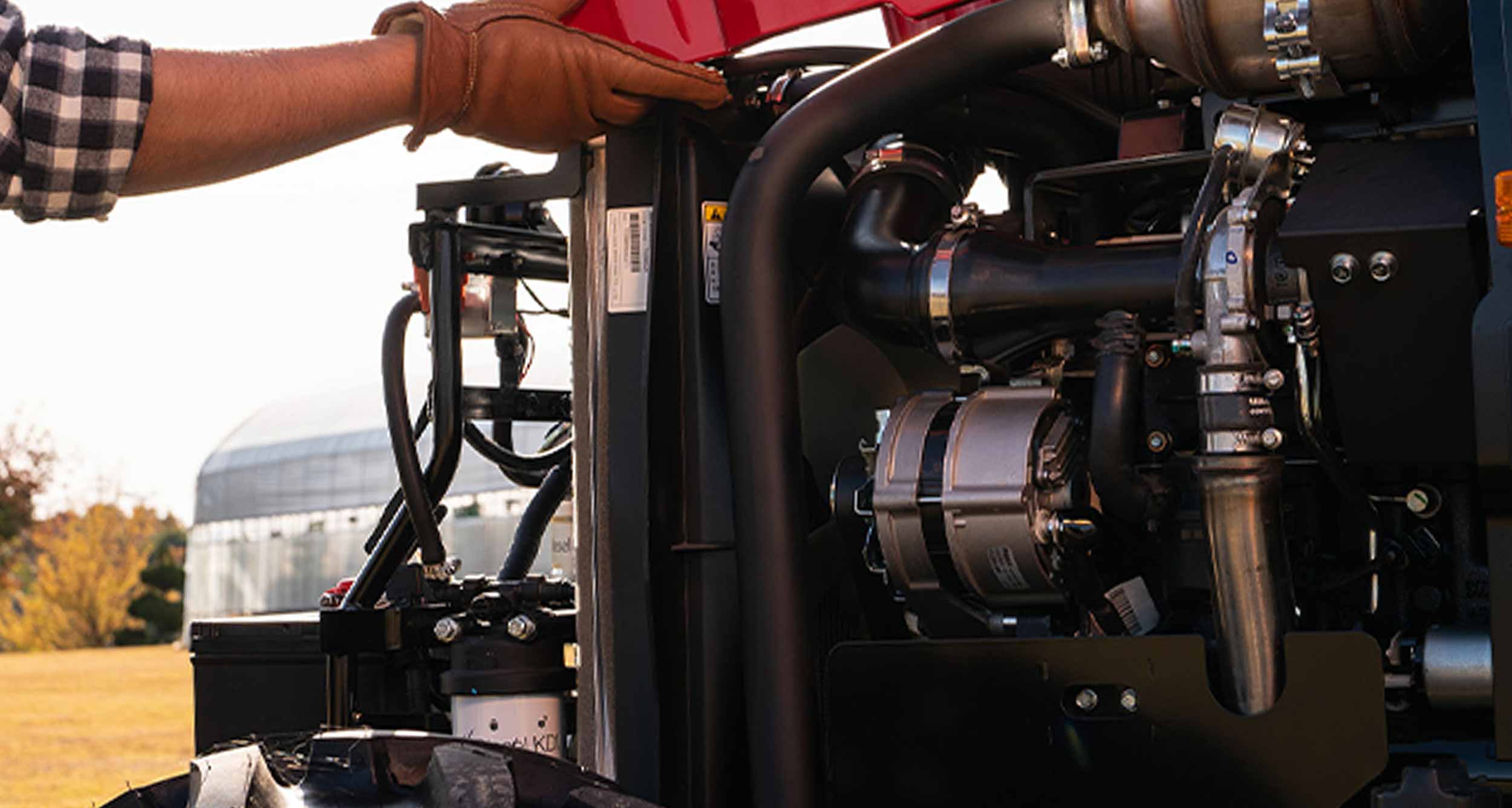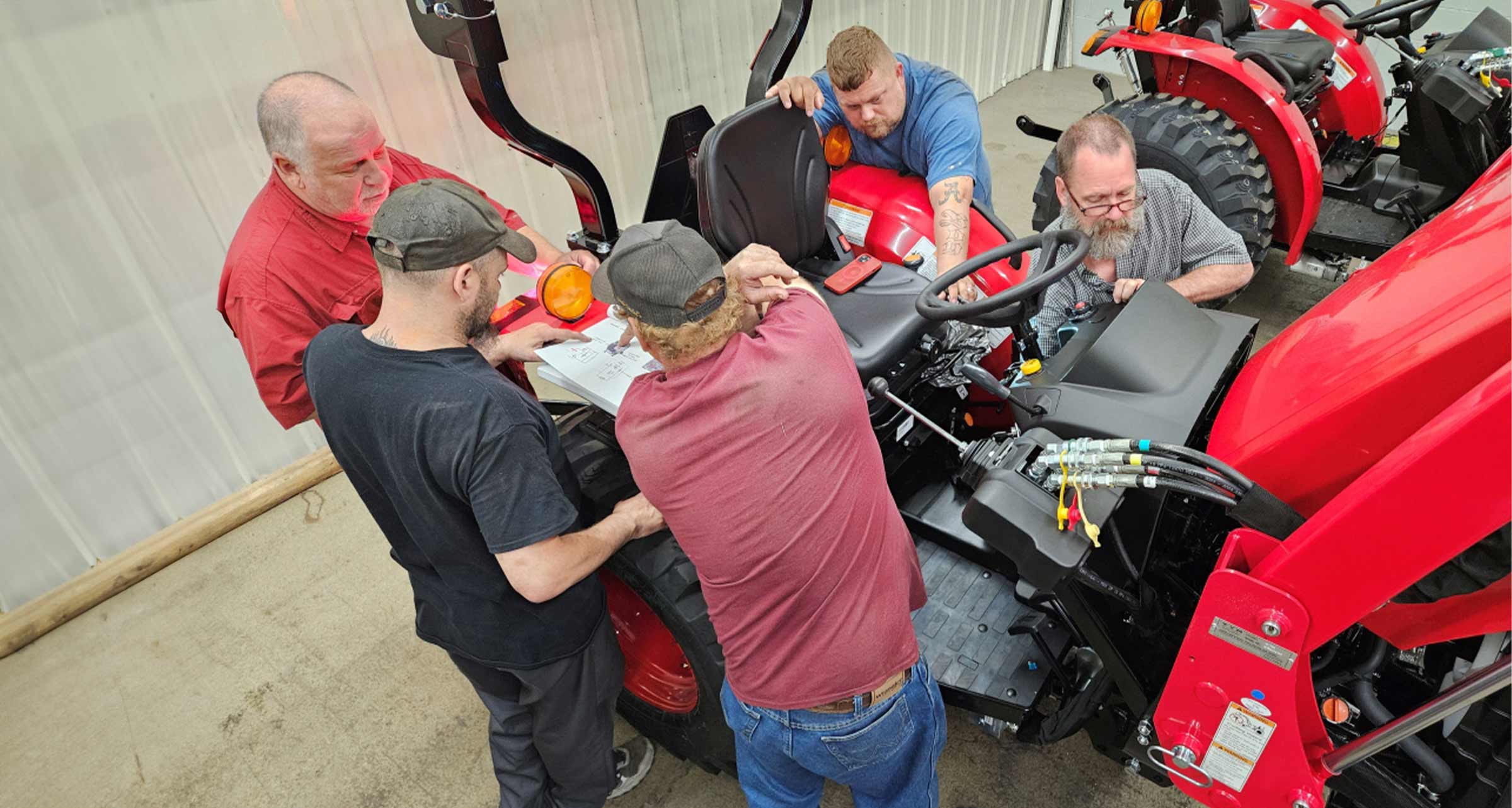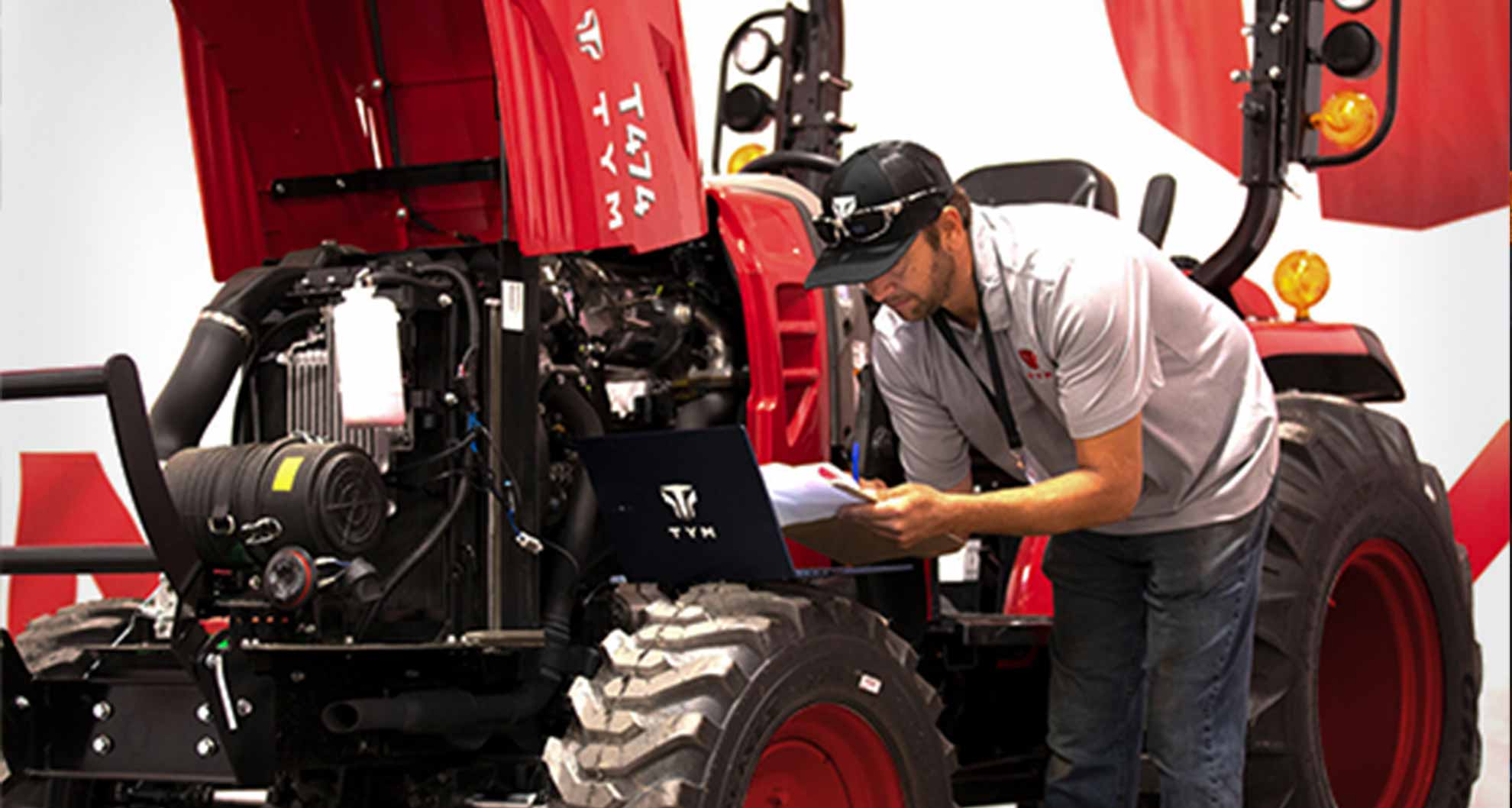
Why does my tractor power feel weak?
If your tractor isn’t delivering the power it used to, the culprit often lies in air, fuel, or load balance. If your tractor’s power is feeling a bit off, here’s a quick check you can do on your own to diagnose the issue:
- Air filter: Check for clogging. A clogged filter restricts airflow, lowering combustion efficiency. Clean gently or replace if needed.
- Fuel quality: Drain and refill with clean diesel. Dirty or low-grade fuel can reduce engine response.
- Tire pressure and load: Inspect the tire pressure. Under-inflated tires or heavy attachments can make the tractor feel sluggish.
When to seek service: If performance doesn’t improve after cleaning or refueling, there may be a bigger issue in the injection or turbo system. If that might be the case, it’s best to contact a certified TYM technician.
Why does my tractor’s hydraulics feel jerky or slow?
A smooth hydraulic system keeps steering, lifting, and attachments responsive. If movements feel hesitant or noisy, here are a few quick checks to go through:
- Fluid level: Ensure the hydraulic oil level is within the marked range.
- Leaks and fittings: Wipe down hoses and connectors to spot any drips or air bubbles.
- Filter condition: Replace filters regularly to prevent contamination.
When to seek service: Persistent vibration, high-pitched noise, or slow lift response may indicate air in the system or worn seals that need professional attention.
Why do the PTO or attachments perform unevenly?
Uneven cutting, raking, or mixing usually means something is off in alignment or speed settings. Here are a few quick checks to perform whenever your tractor feels misaligned.
- PTO shaft connection: Make sure the shaft is properly aligned and fully locked into place.
- Linkage pins: Tighten any loose connections or worn couplers.
- Speed and RPM: Confirm the correct PTO speed (540 or 1000 rpm) and maintain consistent engine RPM.
When to seek service: If the attachment still vibrates or produces uneven results, it could be due to wear in the shaft or splines.
Why is my machine’s performance dropping over time?
Sometimes, the problem isn’t mechanical but habitual. DEF (Diesel Exhaust Fluid), fuel, and oil management make the biggest long-term difference. Here are some daily habits that protect your tractor over time:
- Store DEF correctly: Keep it sealed, out of direct sunlight, and away from contamination.
- Use clean fuel: Drain condensation from tanks and refuel from trusted sources.
- Check oil regularly: Maintain levels and change according to the manual. Changing oil and filters means a cooler, smoother engine.
When to seek service: If warning lights persist after maintenance, it’s time for a diagnostic scan at an authorized TYM service center.
Why these checks matter and how to set yourself up for long-term success
Small habits make big differences in uptime, efficiency, and longevity. These simple inspections take only minutes but prevent hours of downtime. Routine self-checks not only extend your machine’s life but also help you understand it better. By taking these small steps, you ensure that your TYM tractor stays reliable throughout the seasons and performs efficiently.


Quick checklist: 10-minute field diagnostics
Refer to this quick checklist whenever you face these commonly asked questions.
|
Symptom |
Likely Cause |
Quick Fix |
When to Call Service |
|
Weak power |
Clogged air/fuel filter |
Clean or replace |
If issue persists after cleaning |
| Jerky hydraulics | Low fluid or air in system | Check fluid, tighten hoses | If vibration/noise continues |
| Uneven PTO/attachments | Misalignment or loose fittings | Reconnect and secure | If vibration remains |
| Gradual performance loss | Poor DEF, fuel, or oil habits | Refresh fluids, inspect levels | If warning lights persist |